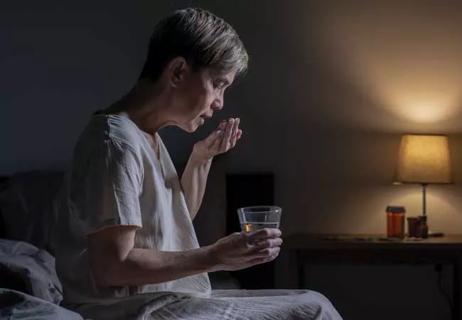Advertisement
Study reveals viable alternative for patients with refractory disease

Although standard treatments, including psychotherapy and prescription medications, have led to substantial improvements in the management of depression, an estimated one-third of patients derive little benefit from first-line therapies. Electroconvulsive therapy (ECT) has long been the method of last resort for alleviating symptoms in these treatment-resistant patients, but the procedure remains underutilized, largely due to a persistent albeit outdated social stigma.
Advertisement
Cleveland Clinic is a non-profit academic medical center. Advertising on our site helps support our mission. We do not endorse non-Cleveland Clinic products or services. Policy
Eager to find an alternative approach to the management of treatment-resistant depression (TRD), clinicians are increasingly turning to ketamine, a common dissociative anesthetic. The drug’s antidepressant effects have generated widespread clinical interest, but little has been understood about how well ketamine compares to ECT for the treatment of severe, refractory depression.
Now, a new study published in the New England Journal of Medicine has revealed that subanesthetic IV ketamine is noninferior to ECT for the management of nonpsychotic TRD. It is the largest study to-date on the comparative effectiveness of the two treatments.
“We have known for some time that ECT and ketamine could be valuable therapies for patients suffering from TRD, but there are no guidelines to explain which treatment should be used – and when,” says Murat Altinay, MD, a psychiatrist in Cleveland Clinic’s Center for Behavioral Health. “Furthermore, the efficacy and safety profiles of ECT and ketamine have never undergone a head-to-head comparison. This recent study helps us close those gaps in our knowledge by allowing us to better understand how these treatments can be used to improve the lives of the millions affected by major depression.”
Dr. Altinay was the primary investigator at Cleveland Clinic, one of five clinical sites to participate in the study.
Although ECT is a well-established treatment for TRD, the procedure is associated with several risks, including cognitive impairment, and its availability remains limited. Such factors make these recent findings particularly relevant for clinicians, says Dr. Altinay.
“This study confirms that we now have another safe, effective and reliable tool in our clinical toolbox that we can offer patients suffering from TRD,” he explains.
Although IV ketamine appears to be a suitable alternative to ECT for the management of refractory depression, Dr. Altinay notes that the use of one treatment does not obviate the use of the other. “This is an important advantage because it gives us another way to individualize treatment,” he says. “It’s hard to overstate the importance of choice when evaluating therapies for depression.”
The noninferiority trial randomized 403 patients in a 1:1 ratio to receive either ECT three times per week or ketamine twice per week for three weeks between March 2017 and September 2022. A total of 170 patients underwent ECT, while 195 patients received IV ketamine. In the six months following treatment, participants completed memory tests and questionnaires (both self-administered and clinician administered) about their depressive symptoms and quality-of-life.
Advertisement
More than half (55%) of the patients who received ketamine and 41% of the patients who underwent ECT reported at least a 50% improvement in their depressive symptoms during the follow-up period. Participants also reported improvement in their quality of life, an outcome that was similar between the two groups.
At the end of treatment, patients who underwent ECT showed more memory problems than those who received ketamine. By the end of the one-month follow-up period, however, memory function was similar between the two groups. ECT was also associated with musculoskeletal side effects. Patients who received ketamine experienced greater levels of dissociation during treatment compared to the ECT group.
Of note, IV ketamine – the formulation used in this study – is FDA approved only as an anesthetic agent. A fast-acting nasal spray (esketamine) is approved in conjunction with an oral antidepressant for the management of TRD.
In the near future, Dr. Altinay and his team hope to expand their research to include additional patient populations, including older adults and those with psychotic or bipolar depression. A new follow-up study to compare ECT and ketamine for the treatment of patients with acute suicidal depression will soon be underway.
“Decades of research have greatly advanced our ability to manage major depression, but there’s still much to be done,” Dr. Altinay adds. “I’m excited about the possibilities that IV ketamine may offer and look forward to further exploring its clinical implications.”
Advertisement
Advertisement

Positive emotions, low impulsivity appear to safeguard against weight gain, other comorbidities

Study sheds light on how clinicians addressed their patients’ pain and insomnia during the pandemic

Burnout found to be more likely in 20- to 39-year-olds versus older colleagues

Multidisciplinary program helps budding clinicians explore the human dimensions of patient care and medical research

Program empowers Black stylists to provide emotional first aid

Consultation service provides comprehensive care to patients with anxiety, PTSD, schizophrenia, and other high-risk disorders

Study shows a growing openness to the clinical potential of psychedelic treatments

Urine test strips and point-of-care testing may be key to slowing opioid epidemic